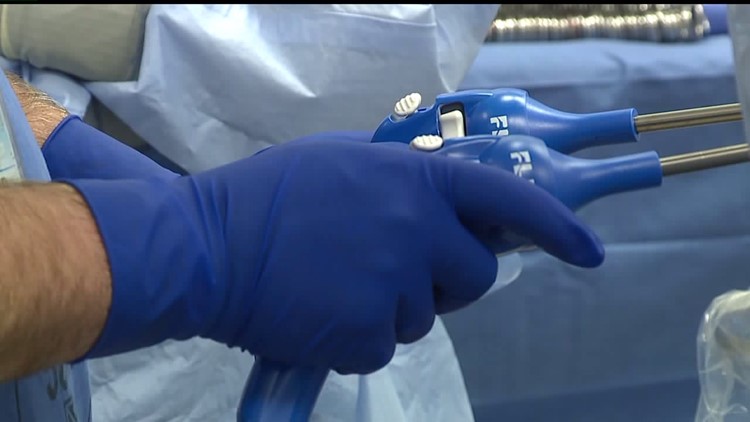HUMMELSTOWN, Pa. -- More than 30 years into his relationship with his wife, contracting a sexually transmitted disease was about the furthest thing from Dan Eubank's mind.
Imagine his surprise when not only did doctors tell Eubank, 56, that he had the human papillomavirus, more commonly known as HPV, but in unknowingly getting it more than three decades ago, it directly led to cancer forming in his throat.
Eubank says he first discovered a lump in his neck in August 2018. With no symptoms or pain, he put off saying anything or having it checked until last February.
"I thought I was gonna be so busy at work, so I didn’t want to take time off," Eubank said. "That almost killed me."
Eubank was diagnosed with metastatic squamous cell carcinoma. He had successful surgery in June, and is now trying to increase awareness in HPV-induced throat cancers, also known as oropharyngeal cancer, which is seeing a sharp increase in men nationwide. The U.S. Centers for Disease Control and Prevention says about 14,800 men get the cancer a year, enough to have started referring to it as an "epidemic."
Dr. David Goldenberg, the Chief of Otolaryngology (head and neck surgery) at the Penn State Hershey Medical says medical professionals are still learning about the traits of oropharyngeal cancer, which he says can take 20 to 30 years to metastasize.
"It is evolving so fast its hard to tell what the trends are," Dr. Goldenberg said. "It's evolving as we speak."
CDC statistics show oropharyngeal cancers have spiked 300 percent in the last 20 years and is more than four times more common in men than women. It is mostly contracted through oral sex.
Doctor Goldenberg estimates he sees three to five patients per week dealing with cancers caused by HPV.
"We have a new disease here, but we`re dealing with it using new technology which is really great," Goldenberg said.
The new technology is called the Flex Robot. Before, cancer patients would have to likely undergo chemotherapy and radiation, or a surgery which involves cutting through to the jaw line to allow surgeons the ability to remove the tumor. However, the Flex Robot gives surgeons the ability to go in through the mouth without having to split the jaw.
Penn State Hershey Medical was the second hospital in the country to use the Flex Robot.
Patients, like Dan Eubank, are usually able to have the surgery and leave the hospital within 1-2 days. He hasn't been able to return to work just yet. Eubank's tumor started in his neck, and because he ignored the lump for months, it slid down and rested on his carotid artery, causing nerve damage in his shoulder. Eubank sees three different physical therapists twice a week.
"I knew I had this lump for over a year and did nothing about it," Eubank said. "If you see something, say something. If you have a lump, get it checked out."



